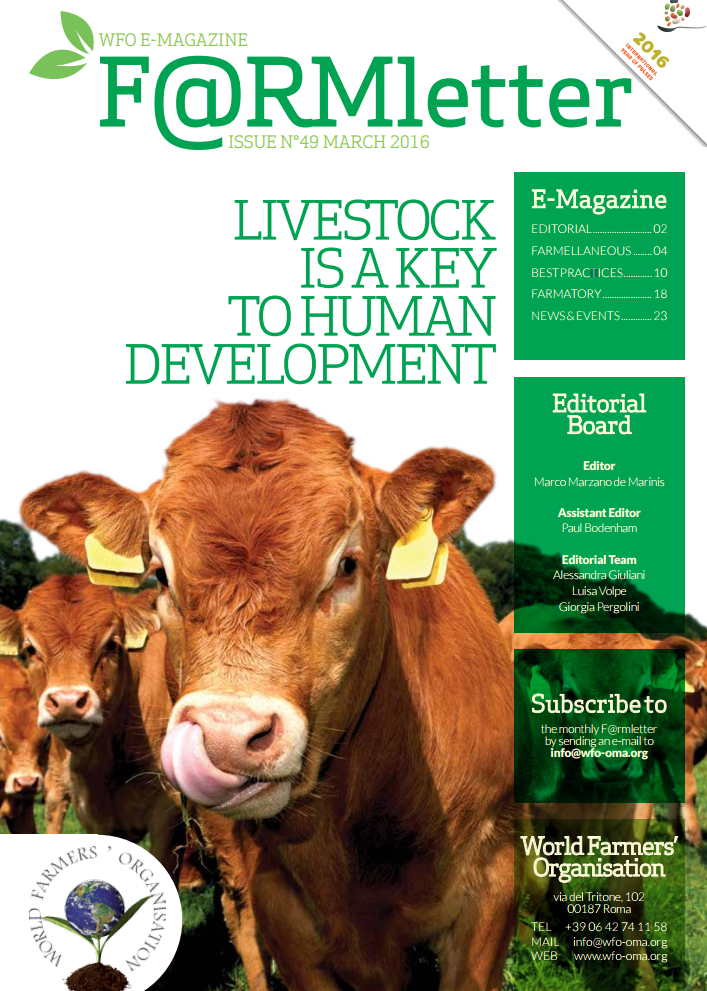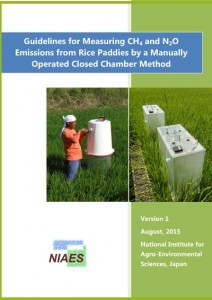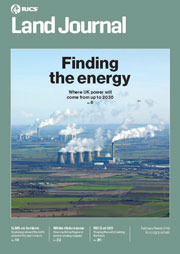A special issue of Land Journal, with guest editors Dr. Matt Bell & Dr. Matthew Harrison, will present current research regarding the measurement and modelling of greenhouse gas emissions from agricultural production, including land used for crops, livestock, grassland and woodland. Considerable research into sources and sinks of emissions from agriculture has been carried out in recent years to improve our ability to quantify emissions and to assess mitigation options at the farm level. Loss of carbon in the form of methane or carbon dioxide, and nitrogen in the form of nitrous oxide, make up pollutants associated with global warming and climate change. Agriculture is a notable source of enteric methane emissions from ruminant livestock, as well as methane or nitrous oxide emissions from manure and land. Alternatively, grassland or woodland areas can provide an opportunity to sequester atmospheric carbon. Papers exploring these dynamics associated with agricultural land use are welcomed.
Developments in gas monitoring and modelling capabilities now provide new insights into land management options for reduced greenhouse gas emissions for more sustainable food production systems. Papers should cover some aspect of measuring or modelling gas emissions at the farm level.
Submit papers by 1 October 2018 to: http://www.mdpi.com/journal/land/special_issues/agricultural_GGE
‘Reducing Enteric Methane for Improving Food Security and Livelihoods’, a project implemented by the Food and Agriculture Organisation (FAO) and New Zealand Agricultural Greenhouse Gas Research Centre in association with the Global Research Alliance (GRA), has a new website where you will soon be able to see results from the project. The project aims to identify system specific technologies and interventions to increase ruminant productivity and reduce the emissions intensity of enteric methane. Ruminant production systems with low productivity lose more energy per unit of animal product than those with high productivity. The solution is to identify and implement low cost or no cost technologies that offer win-win scenarios to increase productivity across production systems, strengthen farmer livelihoods, and increase food security, while reducing methane emissions intensity.
The March edition of the World Farmers’ Organisation (WFO) Farmletter focuses on livestock and includes an article outlining a project from the Livestock Research Group’s workplan, ‘Reducing enteric methane for improving food security and livelihoods’ – a joint initiative of the United Nations Food & Agriculture Organisation (FAO) and the New Zealand Agricultural Greenhouse Gas Research Centre (NZAGRC). The project will design cost-effective intervention packages for specific production systems, aimed to improve farm productivity, food security and rural livelihoods.
The project is funded by the GRA Partners Climate & Clean Air Coalition (CCAC) and the FAO, and by the New Zealand Government.
Download Farmletter (LRG article @ pages 14-17)
The National Institute for Agro-Environmental Sciences (NIAES) has announced the media release of the new publication, “Guidelines for Measuring Methane (CH4) and Nitrous Oxide (N2O) Emissions from Rice Paddies by a Manually Operated Closed Chamber Method”.
The guidelines are supported by the MIRSA-2 project “Technology development for circulatory food production systems responsive to climate change (Development of mitigation option for greenhouse gas emissions from agricultural lands in Asia)”, and funded by MAFF, Japan, to support the goals and objectives of the Paddy Rice Research Group of the Global Research Alliance.
Reducing enteric methane for improving food security and livelihoods
A new brochure is now available on the collaborative project between the GRA and the FAO “reducing enteric methane for improving food security and livelihoods”. This project is identifying the best options to available to farmers now that can use to improve the productivity of their ruminant livestock and reduce the amount of enteric methane these animals produce.
Read the brochure to learn more about how this project is developing regionally appropriate packages of on-farm practices and interventions and understanding how these packages are best shared with farmers.

The microbes responsible for methane emissions in the rumens of ruminant animals have been found to share similarities around the world. The research was carried out by the Global Rumen Census as a collaborative research project with the Livestock Research Group of the Global Research Alliance. The extensive project involved 140 researchers from 73 institutions, analysing rumen microbe samples from 34 countries and farming systems. As a result of this study, there is hope that new technologies that seek to reduce methane emissions by influencing rumen microbes can have global applications.
Read the media release here
Read the full report here
Five animal-safe compounds have been identified as being able to reduce methane emissions in livestock by up to 90%. The discovery was made after more than 100,000 compounds were tested by researchers working through the New Zealand Agricultural Greenhouse Gas Research Centre and Pastoral Greenhouse Gas Research Consortium. Further trials are needed, but the search is already under way for a commercial partner to translate the findings a usable product.
The finding is part of the research made possible through New Zealand’s increased government and farmer funding into agricultural greenhouse gas mitigation. Collaboration on the project with international scientists has been made possible through New Zealand Government funding of the Global Research Alliance. Read the NZAGRC media release and related news release.
New discoveries on the greenhouse gas methane produced in the rumen of ruminant animals have been made through research funded by the New Zealand government to support the GRA. The research is part of the Global Rumen Census, the Hungate 1000 and the Identification of low methane emitting phenotypes research projects. NZ AgResearch has identified and classified methanogens in the rumen of New Zealand ruminant animals, to help pinpoint targets and develop strategies for reducing agricultural methane emissions. Findings to date show a limited diversity of methanogens, and in low-emitting rumens, a smaller physical size and additional strains of bacteria, some of which do not produce hydrogen. Another type of low-emitting rumen has been discovered and is still being examined. The findings represent an important step towards the goal of breeding low methane-emitting sheep which also maintain reproductivity and meat and wool production.
The University of Reading’s Centre for Dairy Research (CEDAR) hosted the Global ReseArCH4 inveN2Ory workshop on Friday 31 October. This UK workshop supported the work of the Global Research Alliance and was an opportunity for academics and industry from across the world to view the latest measurement techniques, particularly around methane and nitrous oxide emitted by livestock, soil and manure. Follow the media links below to read more about the workshop
http://www.farmbusiness.cc/news.asp?section=248&newsid=10869
http://www.nfuonline.com/News/The-tricky-task-of-measuring-GHG-emissions/



